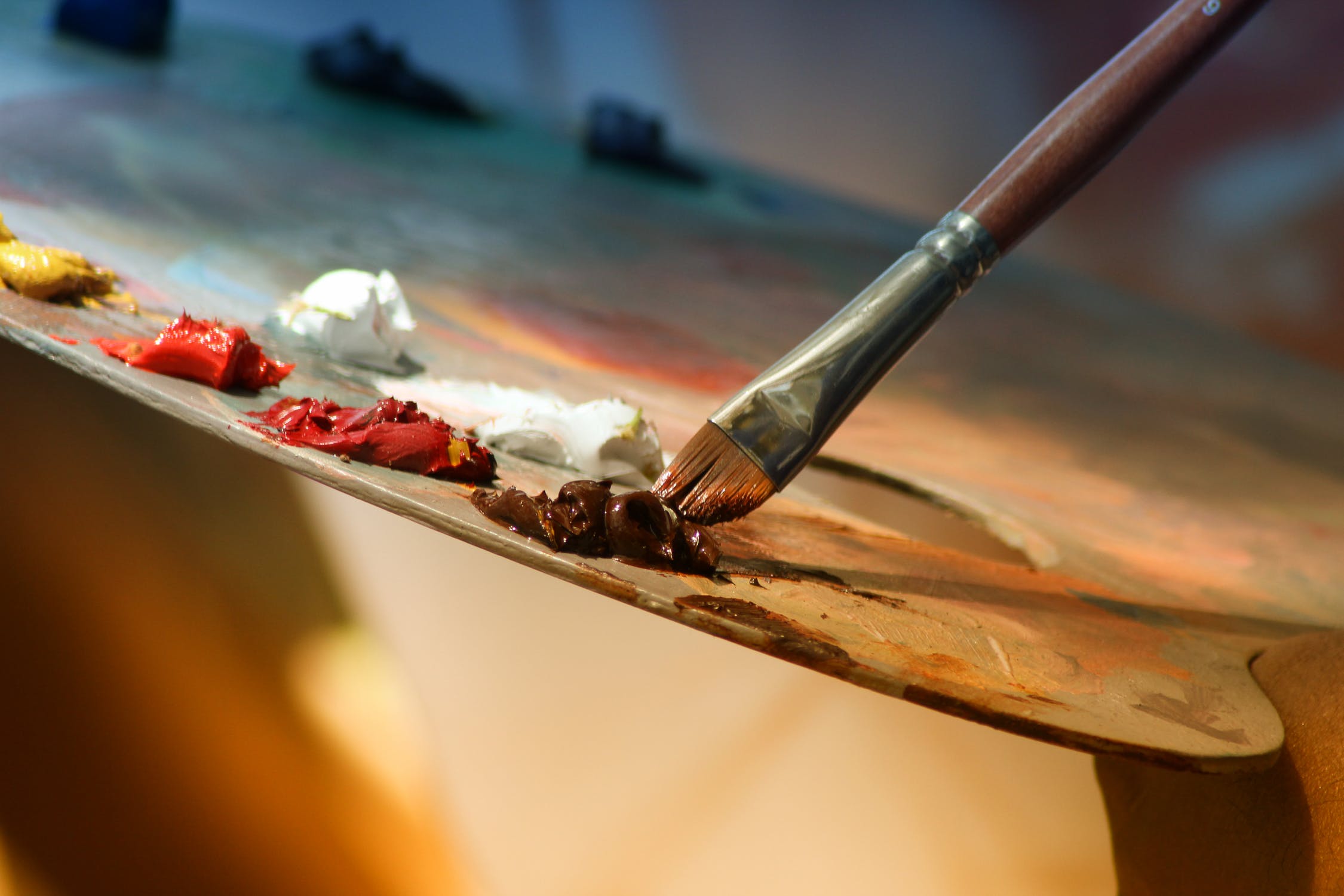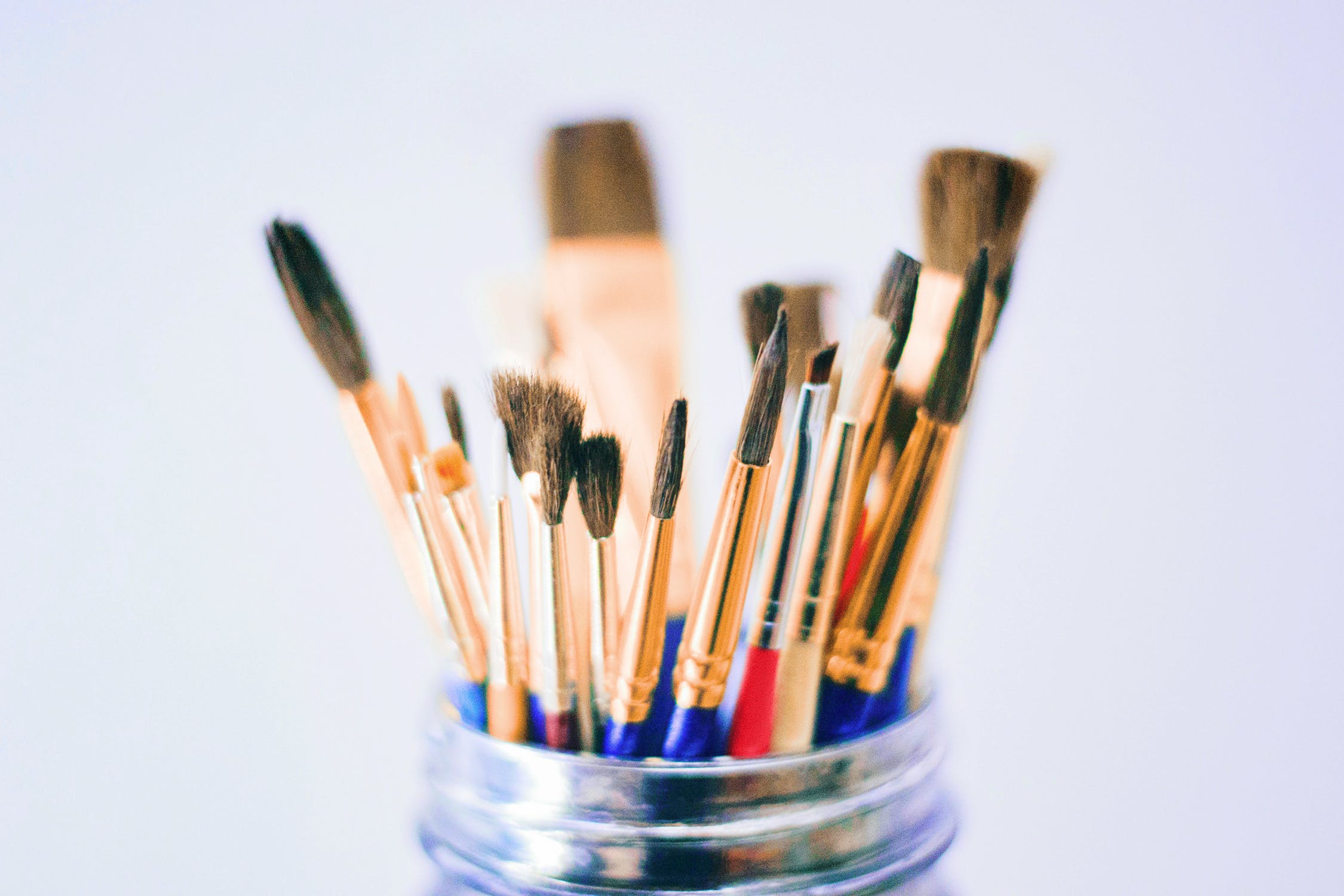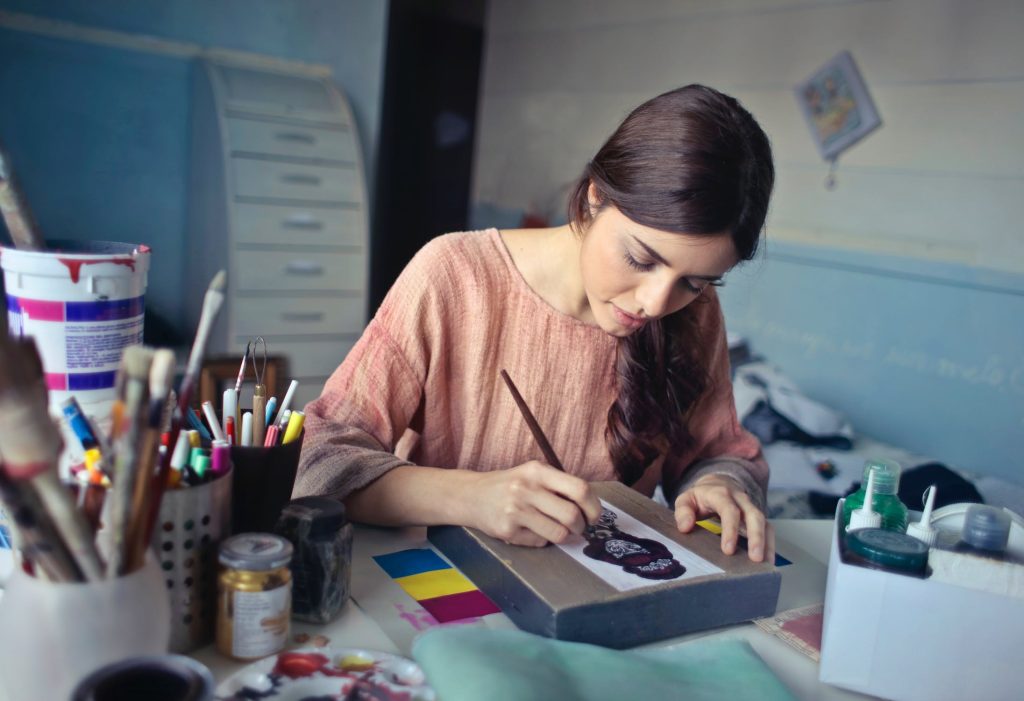What do you think of when you picture a “workspace”? Maybe it’s an office with a giant desk, a laptop, and shelves full of reference books. Maybe it’s a cubicle stocked with pencils, pens, and a stapler. For creatives, though, a workspace is more likely to hold paint, tools, multiple screens, or camera film than a computer or typical office supplies.
Many people believe the myth that creative workspaces are messy and chaotic. Creatives are free spirits, so their workspace is doomed to have zero order, right? Not quite. While many creatives think they can thrive in a disorganized environment, a disheveled workspace could actually hinder the very thing they’re after—creation at its best.
Why Is Organization for Creatives So Important?

Are you a creative? As you work on your usual projects, it’s natural for the tools or supplies you use to be strewn about the room in various piles. This is fine, but what happens over time? You move on to a new project, and the piles multiply. If you don’t have organizational systems, your entire workspace is soon covered in multiple layers of stuff.
Here’s where that becomes a problem if you’re a creative living and working this way: the next time you’re inspired to create something, you can’t find anything to do that! Picture this: you’re a painter, and one afternoon, your daily walk with your dog inspires you to paint something that captures the blooming trees in your neighborhood. You run to your workspace, only to find that your paint brushes are hardened up with the paint from last week’s creation, and your blank canvases are buried somewhere under the drop cloths you threw in the closet yesterday. You discover that your easel is damaged because you haphazardly dropped your sketchbooks on top of it a few days ago, and it buckled under the weight.
Just like that, you’re suddenly sidetracked by the chaos you’ve just stumbled upon, and your inspiration to actually create has all but evaporated. Even if you still wanted to paint, you can’t find half the supplies you need to do it! Your creativity—and productivity—is undermined before you even had the chance to begin.
But the chaos hasn’t just cost you your inspiration—it’s also going to cost you money and time. You’ll have to buy a new easel to replace the damaged one, and you might even feel guilty for being so careless and damaging the one you had. You’ll spend twice as long as usual washing those brushes to get the hardened paint out of them—and even then, they may never work the same again.
Maybe you’re not a painter, but you knit or crochet and sell your items on Etsy as a side job. If your yarn has coffee spilled on it and your packing materials got ripped because you accidentally stepped on them trying to get to your desk, now you’ll have to pay to replace those items. Suddenly, your hobby or your side hustle is a source of stress rather than a creative outlet or a profitable business.
If you’re a creative, you know that distraction can be a real issue while you’re working. Maybe your collection of vintage buttons is in fragmented piles on the table next to your sewing machine. Maybe you found an amazing piece of fabric last week that you can’t wait to turn into a dress, and it’s just sitting on the floor next to your chair. You need to finish the pillows you promised to make for a friend, but that dress fabric and those buttons are calling you. Before you know it, you’re in the floor experimenting with the buttons and fabric, and your friend calls to ask you if those pillows will be finished this afternoon, like you promised. Yikes! You’ve been sidetracked for two hours, and you haven’t actually accomplished anything because you’re distracted in your chaotic workspace.
How to Organize a Creative Space

Fortunately, operating within a chaotic workspace doesn’t have to be the norm! Once you’re ready to create a calm, organized environment, it’s time to get started on the process to achieve just that. If the thought of cleaning up and reorganizing your creative workspace on your own is just too overwhelming, that’s okay! That’s why professional organizers and companies like A Fresh Space exist, and we’d be happy to help you bring order to your space. Maybe bringing in a professional organizer isn’t feasible for you, and that’s okay, too. Here are some simple steps you can take to work toward the organized workspace you need.
1. Sort and group
Pull out everything you have in your creative workspace. Yes, this will likely be overwhelming, especially if you’ve accumulated a massive collection of mixed media materials and supplies or cords and cables over many years. It’s okay to be overwhelmed! Take it slow so that the overwhelm doesn’t paralyze your progress. Get some folding tables, and lay out every single paint, piece of scrapbook paper, pair of knitting needles, external drives, amp covers—everything! As you pull things out, go ahead and get rid of anything that’s expired, hardened, or otherwise unusable.
2. edit
In this step, focus only on one very specific category, like stickers or drumsticks. This step may take a few hours, or it may take a few weeks. It may also be difficult, and I encourage you to work at your own pace or even consider bringing in a professional for this step.
Part of getting organized is the ability to truly identify what it is you want in your art or creative field. As you look at all the materials, tools, and supplies you’ve accumulated, you may find items related to an art form you no longer practice. For example, maybe you started out in abstract painting ten years ago, but now your work is entirely focused on portraits.
You don’t need mounds of supplies from your abstract days anymore. Instead of keeping all of your abstract supplies, maybe keep just a small, representative sample of those items so that it doesn’t take up the space you desperately need for portrait supplies. It can be hard to let go of these items, especially if you have lots of money and time invested in them. But when organizing, it’s time to accept those items as sunk costs (read more about that here) and focus on who you are and what you want to create now.
3. Store
You’ve made it through the difficult part of editing down your creative supplies and materials. Great! Now it’s time to store these items in an efficient way. With your storage system, everything doesn’t have to be completely visible, but it’s vital that it’s readily accessible so that you always have what you need at your fingertips when inspiration hits.Take advantage of vertical space with shelving or step risers, and label everything so you know exactly what’s inside every container you have. Store similar or related items together. When you choose storage containers, purchase bins that have the same look and will function how you need them to—using random, mismatched containers will only make the space feel chaotic all over again. Many art forms have specialty storage containers designed just for your materials. This is the time to invest in those that you need. But often you can use generic storage solutions such as plastic shoe boxes or even decorative baskets that are multi-functional.
Getting Help With Organizing Creative Workspaces
As I mentioned, organizing your creative space on your own can be overwhelming! If you know you need order in your space, but can’t bring yourself to get started, it may be time to reach out for help. A Fresh Space has organized many spaces for musicians, artists, and other creatives, and we’d love to help you unlock your creativity by organizing your space, too! Contact us today to set up a consultation. We’ll create a space just for you, so that YOU can focus on creating your best work yet.


